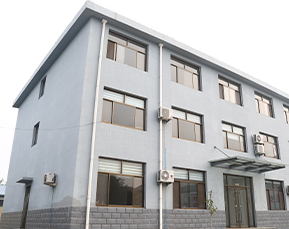 Afrikaans
Afrikaans  Albanian
Albanian  Amharic
Amharic  Arabic
Arabic  Armenian
Armenian  Azerbaijani
Azerbaijani  Basque
Basque  Belarusian
Belarusian  Bengali
Bengali  Bosnian
Bosnian  Bulgarian
Bulgarian  Catalan
Catalan  Cebuano
Cebuano  Corsican
Corsican  Croatian
Croatian  Czech
Czech  Danish
Danish  Dutch
Dutch  English
English  Esperanto
Esperanto  Estonian
Estonian  Finnish
Finnish  French
French  Frisian
Frisian  Galician
Galician  Georgian
Georgian  German
German  Greek
Greek  Gujarati
Gujarati  Haitian Creole
Haitian Creole  hausa
hausa  hawaiian
hawaiian  Hebrew
Hebrew  Hindi
Hindi  Miao
Miao  Hungarian
Hungarian  Icelandic
Icelandic  igbo
igbo  Indonesian
Indonesian  irish
irish  Italian
Italian  Japanese
Japanese  Javanese
Javanese  Kannada
Kannada  kazakh
kazakh  Khmer
Khmer  Rwandese
Rwandese  Korean
Korean  Kurdish
Kurdish  Kyrgyz
Kyrgyz  Lao
Lao  Latin
Latin  Latvian
Latvian  Lithuanian
Lithuanian  Luxembourgish
Luxembourgish  Macedonian
Macedonian  Malgashi
Malgashi  Malay
Malay  Malayalam
Malayalam  Maltese
Maltese  Maori
Maori  Marathi
Marathi  Mongolian
Mongolian  Myanmar
Myanmar  Nepali
Nepali  Norwegian
Norwegian  Norwegian
Norwegian  Occitan
Occitan  Pashto
Pashto  Persian
Persian  Polish
Polish  Portuguese
Portuguese  Punjabi
Punjabi  Romanian
Romanian  Russian
Russian  Samoan
Samoan  Scottish Gaelic
Scottish Gaelic  Serbian
Serbian  Sesotho
Sesotho  Shona
Shona  Sindhi
Sindhi  Sinhala
Sinhala  Slovak
Slovak  Slovenian
Slovenian  Somali
Somali  Spanish
Spanish  Sundanese
Sundanese  Swahili
Swahili  Swedish
Swedish  Tagalog
Tagalog  Tajik
Tajik  Tamil
Tamil  Tatar
Tatar  Telugu
Telugu  Thai
Thai  Turkish
Turkish  Turkmen
Turkmen  Ukrainian
Ukrainian  Urdu
Urdu  Uighur
Uighur  Uzbek
Uzbek  Vietnamese
Vietnamese  Welsh
Welsh  Bantu
Bantu  Yiddish
Yiddish  Yoruba
Yoruba  Zulu
Zulu Exploring the Role and Impact of Carrier Idler in Transportation Systems
Understanding Carrier Idler A Key Component in the Transportation Industry
In the ever-evolving transportation industry, efficient logistics and smooth operation of machinery are paramount for success. Among the myriad of components that play a crucial role in these systems is the carrier idler. This essential part often goes unnoticed but significantly contributes to the overall functionality of various transport mechanisms, especially in heavy-duty vehicles and equipment used in construction, agriculture, and mining.
At its core, the carrier idler serves as a support and guide for tracks in tracked vehicles, ensuring that the track remains in proper alignment during operation. Typically found in bulldozers, excavators, and other heavy machinery, the idler is a crucial element that aids in the distribution of weight, which helps prevent undue wear and tear on the vehicle’s track system.
The design of a carrier idler is vital for its effectiveness
. Generally constructed from high-strength steel or other resilient materials to withstand harsh environments, the idler must endure significant pressures and stress. Its primary function is to provide a stable path for the track to move over, eliminating slack and minimizing the risk of track derailment. Properly functioning idlers enhance the overall performance and lifespan of the machinery, making them an integral part of maintenance routines.carrier idler

In addition to mechanical performance, the carrier idler plays a role in improving fuel efficiency. When machinery operates smoothly, it requires less energy to perform tasks, which translates to lower fuel consumption. This is particularly relevant in industries where fuel costs constitute a substantial portion of operational expenses. By ensuring that the idler system is well-maintained and efficient, companies can benefit from reduced overhead costs.
Furthermore, the carrier idler contributes to safety in the workplace. A well-maintained idler system minimizes the risk of unexpected machinery failure, which can lead to accidents and costly downtime. Ensuring that these components are regularly inspected and replaced when necessary can help safeguard the workforce and prevent injuries.
The advancement in technology has also influenced the evolution of carrier idlers. With the introduction of wear-resistant materials and innovative engineering designs, modern idlers are more durable and efficient than their predecessors. Additionally, advancements in manufacturing techniques have allowed for the production of idlers that are lighter yet stronger, which further enhances the performance of heavy machinery.
In conclusion, although the carrier idler may seem like a minor component in the grand scheme of machinery operation, its significance cannot be overstated. It supports the machinery, enhances efficiency, improves safety, and contributes to overall operational costs. For industries relying on heavy machinery, investing in high-quality carrier idlers and ensuring their proper maintenance is crucial to achieving optimal performance and longevity in equipment. As the transportation landscape continues to evolve, the role of the carrier idler remains indispensable, supporting the backbone of many industries.
-
Revolutionizing Conveyor Reliability with Advanced Rubber Lagging PulleysNewsJul.22,2025
-
Powering Precision and Durability with Expert Manufacturers of Conveyor ComponentsNewsJul.22,2025
-
Optimizing Conveyor Systems with Advanced Conveyor AccessoriesNewsJul.22,2025
-
Maximize Conveyor Efficiency with Quality Conveyor Idler PulleysNewsJul.22,2025
-
Future-Proof Your Conveyor System with High-Performance Polyurethane RollerNewsJul.22,2025
-
Driving Efficiency Forward with Quality Idlers and RollersNewsJul.22,2025





























